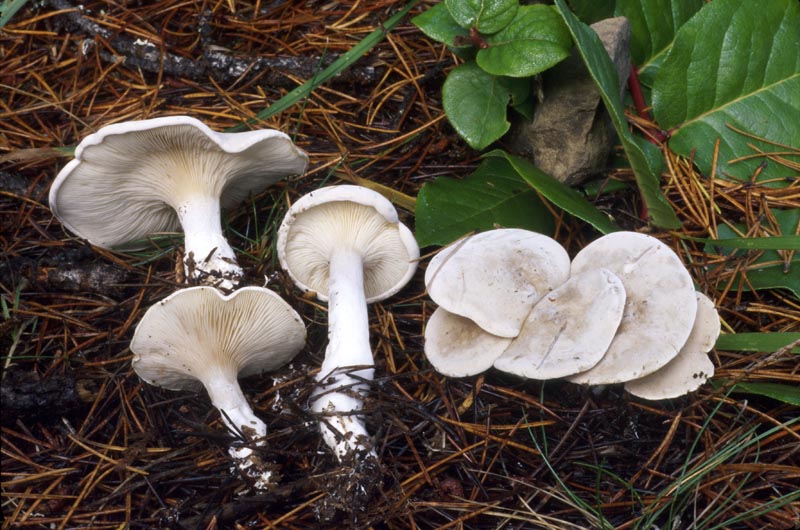
© Steve Trudell
Danny’s DNA Discoveries – Clitopilus s.l. of the PNW
by Danny Miller
|
|
Danny’s DNA Discoveries – Clitopilus s.l. of the PNW |
|
Introduction
These genera do not have as strongly angled spores as the rest of the Entoloma family, or the angles are only visible from certain aspects, which makes the angles harder to see under a scope. Sometimes the spore print colour is barely pink at all. Combined, these features can make these species hard to place in the Entolomataceae family (pink angled spores with attached gills). Even Entoloma lumpers do not call these species by the name Entoloma proper. There is little controversy about the names I use on this page. Either you call them all species of Clitopilus (which few people are doing) or you split them into these 5 genera. I do not understand why the Europeans are willing to split these few mushrooms into 5 tiny genera, but they are not willing to split Entoloma like I do, so thousands of species are in the Entoloma genus. Clitopilus - pink spored oyster mushrooms will either be in this genus, or if the spores are more strongly and obviously angled, in Claudopus. Clitopilus also contains non-oysters. In this genus, the spores that happen to be in polar view (where you are looking at the top or bottom of the spore) will appear angular from ridges along their longitudes. The spores that are laying on their sides may appear smooth without a high quality, powerful lens or electron microscope. Rhodocybe - the spores in polar view may appear angular from prominent pustules, but not entire longitudinal ridges. This difference may be hard to see without an electron microscope. These species have no clamps. Rhodophana - similar to Rhodocybe, but with clamps. In the PNW, they are bright orange and strongly farinaceous. Clitopilopsis - the pustules are more obscure, making the spores often appear smooth even in polar view without a high quality, powerful lens or electron microscope. Spore walls are thickened. Clitocella - similar to Clitopilopsis, but thin spore walls. None are known from the PNW yet, but it is known from northern California. Rhodocybe nuciolens spore print © Yi-Min Wang. This pale colour and the subtlety of the angles on the spores makes these species hard to identify. abundant common uncommon rare - colour codes match my Pictorial Key and are my opinions and probably reflect my bias of living in W WA. Rare species may be locally common in certain places at certain times. |
|
Summary of Interesting Results
Here are some of the newest, most interesting results of the study:
|
 Clitopilus - click to expand Clitopilus - click to expand
In the PNW, this genus contains a white clitocyboid species and little white oysters (easily confused with Entoloma s.l. oysters in the genus Claudopus , which are grey or brown and have more strongly angled spores). Species mentioned: Clitopilus prunulus, cystidiatus, hobsonii, baronii, kamaka. |
 Rhodocybe - click to expand Rhodocybe - click to expand
Brown, grey or orange mushrooms of collybioid or omphalinoid stature. See also Clitopilopsis for a somewhat farinaceous grey, slender, long stemmed choice and Rhodphana for a strongly farinaceous bright orange choice. Species in this genus are not going to be easy to differentiate. Species mentioned: Rhodocybe nuciolens, hondensis, aureicystidiata, dubia, caelata, tugrulii. |
 Rhodophana - click to expand Rhodophana - click to expand
Strongly farinaceous bright orange collybioids, probably more brightly coloured and more strongly farinaceous than similar Rhodocybe. All our species seem at least slightly umbonate. Species mentioned: Rhodophana nitellina. |
 Clitopilopsis - click to expand Clitopilopsis - click to expand
One slender grey mushroom that may have a long stem, may be convex capped or slightly umbilicate and may have slightly decurrent gills. Perhaps somewhat farinaceous. More collections are needed to learn to differentiate it macroscopically from the several grey Rhodocybe with thinner spore walls. Species mentioned: Clitopilopsis hirneola, albida |